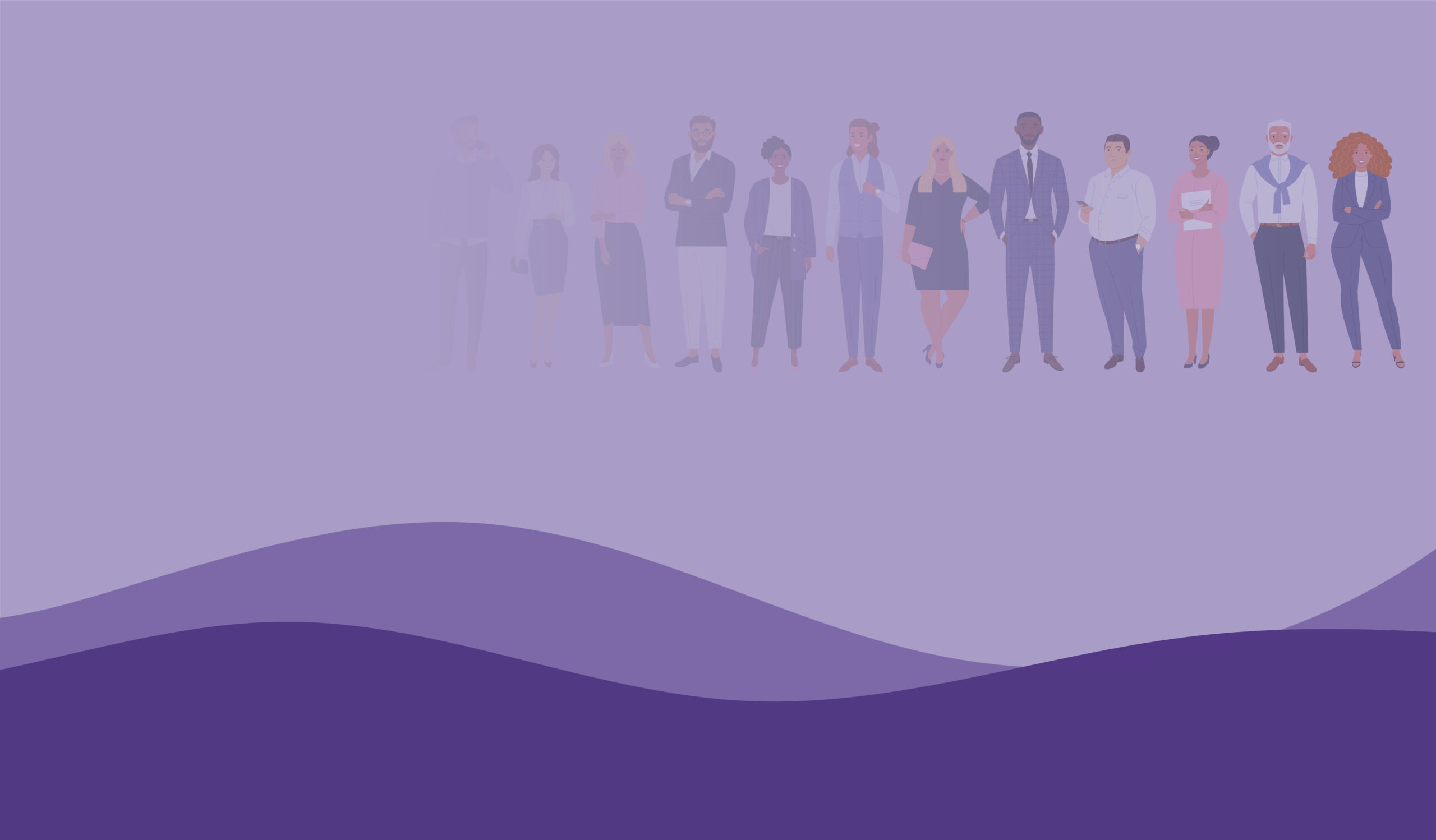

Mid Level Leader
Helping director leaders at global and fast-growing software organization take a more holistic view to strategic thinking, decision making, risk taking and leadership with partners and team members.
Lorem ipsum dolor sit amet, consectetur adipiscing elit, sed do eiusmod tempor incididunt ut labore et dolore magna aliqua. Lorem ipsum dolor sit amet, consectetur adipiscing elit, sed do eiusmod tempLorem ipsum dolor sit amet, consectetur adipiscing elit, sed do eiusmod tempor incididunt ut labore et dolore magna aliqua. Lorem ipsum dolor sit amet, consectetur adipiscing elit, sed do eiusmod tempLorem ipsum dolor sit amet, consectetur adipiscing elit, sed do eiusmod tempor incididunt ut labores
Lorem ipsum dolor sit amet, consectetur adipiscing elit,
What exactly is the challenge
and why is it important?
Lorem ipsum dolor sit amet, consectetur adipiscing elit, sed do eiusmod tempor incididunt
Lorem ipsum dolor sit amet, consectetur adipiscing elit, sed do eiusmod tempor incididunt
Lorem ipsum dolor sit amet, consectetur adipiscing elit, sed do eiusmod tempor incididunt
Lorem ipsum dolor sit amet, consectetur adipiscing elit, sed do eiusmod tempor incididunt
The Uncommon sense of MESSY leadership
Based on research from interviews with 40+ top global leadership learning experts, this whitepaper outlines how 2020 changed the mindsets leaders need for success.

How we solve
Offering 1
Lorem Ipsum is simply dummy text of the printing and typesetting industry. Lorem Ipsum has been the industry’s standard dummy text ever since the 1500s, when an unknown printer took a galley of type and scrambled it to make a type specimen book.
It has survived not only five centuries, but also the leap into electronic typesetting, remaining essentially unchanged. It was popularised in the 1960s with the release of Letraset sheets containing Lorem Ipsum passages, and more recently with desktop publishing software like Aldus PageMaker including versions of Lorem Ipsum.
Lorem Ipsum is simply dummy text of the printing and typesetting industry.
Lorem Ipsum has been the industry’s standard dummy text ever since the 1500s, when an unknown printer took a galley of type and scrambled it to make a type specimen book. It has survived not only five centuries, but also the leap into electronic typesetting, remaining essentially unchanged. It was popularised in the 1960s with the release of Letraset sheets containing Lorem Ipsum passages, and more recently with desktop publishing software like Aldus PageMaker including versions of Lorem Ipsum.
Take me thereOffering 2
Lorem Ipsum is simply dummy text of the printing and typesetting industry. Lorem Ipsum has been the industry’s standard dummy text ever since the 1500s, when an unknown printer took a galley of type and scrambled it to make a type specimen book.
It has survived not only five centuries, but also the leap into electronic typesetting, remaining essentially unchanged. It was popularised in the 1960s with the release of Letraset sheets containing Lorem Ipsum passages, and more recently with desktop publishing software like Aldus PageMaker including versions of Lorem Ipsum.
Lorem Ipsum is simply dummy text of the printing and typesetting industry.
Lorem Ipsum has been the industry’s standard dummy text ever since the 1500s, when an unknown printer took a galley of type and scrambled it to make a type specimen book. It has survived not only five centuries, but also the leap into electronic typesetting, remaining essentially unchanged. It was popularised in the 1960s with the release of Letraset sheets containing Lorem Ipsum passages, and more recently with desktop publishing software like Aldus PageMaker including versions of Lorem Ipsum.
Take me thereOffering 3
Lorem Ipsum is simply dummy text of the printing and typesetting industry. Lorem Ipsum has been the industry’s standard dummy text ever since the 1500s, when an unknown printer took a galley of type and scrambled it to make a type specimen book.
It has survived not only five centuries, but also the leap into electronic typesetting, remaining essentially unchanged. It was popularised in the 1960s with the release of Letraset sheets containing Lorem Ipsum passages, and more recently with desktop publishing software like Aldus PageMaker including versions of Lorem Ipsum.
Lorem Ipsum is simply dummy text of the printing and typesetting industry.
Lorem Ipsum has been the industry’s standard dummy text ever since the 1500s, when an unknown printer took a galley of type and scrambled it to make a type specimen book. It has survived not only five centuries, but also the leap into electronic typesetting, remaining essentially unchanged. It was popularised in the 1960s with the release of Letraset sheets containing Lorem Ipsum passages, and more recently with desktop publishing software like Aldus PageMaker including versions of Lorem Ipsum.
Take me thereOffering 4
Lorem Ipsum is simply dummy text of the printing and typesetting industry. Lorem Ipsum has been the industry’s standard dummy text ever since the 1500s, when an unknown printer took a galley of type and scrambled it to make a type specimen book.
It has survived not only five centuries, but also the leap into electronic typesetting, remaining essentially unchanged. It was popularised in the 1960s with the release of Letraset sheets containing Lorem Ipsum passages, and more recently with desktop publishing software like Aldus PageMaker including versions of Lorem Ipsum.
Lorem Ipsum is simply dummy text of the printing and typesetting industry.
Lorem Ipsum has been the industry’s standard dummy text ever since the 1500s, when an unknown printer took a galley of type and scrambled it to make a type specimen book. It has survived not only five centuries, but also the leap into electronic typesetting, remaining essentially unchanged. It was popularised in the 1960s with the release of Letraset sheets containing Lorem Ipsum passages, and more recently with desktop publishing software like Aldus PageMaker including versions of Lorem Ipsum.
Take me theretest
test
AI-first business simulations
A BTS next gen innovation story When BTS invented business simulations in the 1980s, leadership development was mostly theoretical – case studies, lectures, and frameworks about what good decisions looked like. Simulations changed that. They let leaders learn by doing, stepping into a realistic version of their business to test strategy, make decisions, and see the impact before the stakes were real. Since then, simulations have evolved from spreadsheets to digital platforms to immersive virtual experiences that capture the complexity of leading in today’s world. Now, large language models and agentic AI are opening a new frontier, one where simulations evolve as fast as the world they reflect and experiential learning scales with the pace of change. Creating space for exploration Test quickly, abandon what doesn’t work, and share what you learn. – Jessica Skon, CEO, BTS A handful of simulation experts were pulled out of their day-to-day work and given the freedom to set their own direction. They had the authority to shape the roadmap and the protection to explore bold ideas without fear of critique. The brief was simple: go figure out what’s possible. They had cover to fail fast, freedom to explore, and permission to get a little messy. Early wins were interesting but small. AI could draft faster, automate a few things – helpful, sure. Transformative? Not yet. The breakthrough came when we stopped trying to bolt AI on to what we already did. We rebuilt our simulation platforms, our processes, and tools from the ground up around AI. Suddenly it wasn’t just about micro-gains & efficiencies, the canvas of possibility was much larger. From experimentation to acceleration So, we tested. Some tools showed promise, others, not so much. Every experiment taught us something. Each “failure” made us sharper about where AI could actually help, and where it would just get in the way. What began as small experiments turned into a new way of working, a process and platform working as one. AI now accelerates the first 80% of the work, the structure, synthesis, and early drafts, freeing BTS consultants to focus on the high-impact moments that drive behavior change: dilemmas, trade-offs, and conversations that build conviction. Our new AI simulation platform and AI-First development process operationalizes that process: Enabling live co-creation and branching edits with clients Applying light guardrails for quality and security Integrating with enterprise systems for compliance and control AI accelerates, people transform. That combination is what makes BTS… BTS. Clients feel the impact in four ways Fast spin-ups for focused needs For targeted challenges like coaching a customer conversation, debriefing a safety incident, aligning a sales team, we can now stand up bespoke simulations in days, not weeks. Teams co-create live; scenarios adjust in the room; relevance is immediate. Enterprise simulations for strategy alignment For multi-round, high-fidelity simulations, AI accelerates the structure without compromising quality. BTS experts still craft the dilemmas and trade-offs that drive conviction. A broader platform portfolio Beyond enterprise simulations, we now support conversational practice, skill drills, workflow redesign, and company or market modeling, helping clients choose the right tool for each need. On-demand, without the risk Clients can use our AI platform for self-authored micro-sims, where speed and iteration matter most. Our toolchain scaffolds the flow, enforces guardrails, and keeps quality high. The best model is flexible: enable where DIY shines, co-build for complex challenges, and experts lead end-to-end when outcomes matter most. What clients are already seeing Weeks to hours: Work that once took six weeks was delivered as a high-fidelity experience in just 13 hours, specific enough to engage a CEO on first pass. Lean, agile teams: Projects that required seven consultants now take two, with no loss in quality or impact. Live collaboration: Simulations are built with clients, not for them, adjusted in real time during design and delivery. The result: faster delivery, deeper relevance, and experiences that scale across an enterprise without losing the human touch. The bigger picture BTS simulations have always given leaders a safe place to wrestle with real dilemmas. AI hasn’t changed that, it’s expanded the canvas. By rebuilding how we design and deliver simulations, we’ve removed the trade-off between speed and substance. Focused needs can now be met in days. Complex transformations can move at the pace of business. Clients can engage however they choose, DIY, co-create, or end-to-end, with BTS expertise guiding every step. We’re still early in this chapter, just like our clients. But the direction is clear: faster, smarter, more scalable experiential learning, anchored in human judgment, strategic alignment, and the craft that defines BTS.

Accelerating AI-first innovation at scale
Client need By 2024, artificial intelligence was transforming how medical devices industry operated, from product design and manufacturing to clinical insight and customer engagement. Competitors were already using AI to shorten development cycles, improve quality, and bring smarter devices to market faster. Startups were pushing the boundaries even further. For one Fortune 100 global medical devices company, the question wasn’t if they would use AI, but how fast and how deeply they could make it part of the business. Like many organizations in this space, they saw enormous promise, but also the practical challenges that come with scale, regulation, and change. The leadership team saw the potential for AI to transform how the business worked, yet progress was uneven. Teams held different views of what AI could do, and early experiments surfaced concerns about data privacy, accuracy, and safety. Many employees weren’t sure how AI fit into their day-to-day work or how to use it responsibly. To move forward, the company needed to focus on a few critical shifts: Tackling questions and concerns at every level of the organization Creating a shared understanding of where and how AI drives value Helping leaders translate AI strategy into meaningful action with their teams That’s where BTS came in. Solution To accelerate transformation at scale, BTS designed a phased capability-acceleration program that met leaders where they were, building confidence, speed, and AI fluency across the enterprise through immersive, business-driven experiences. Tailored by leadership level From executives shaping enterprise strategy to directors driving operational execution, each audience experienced targeted challenges and decision contexts that made AI real and relevant to their work. Global alignment A multilingual, virtual rollout enabled simultaneous engagement of thousands of employees worldwide, ensuring speed, consistency, and measurable impact across regions. Continuous evolution Regular refresh cycles kept the experience aligned to the company’s advancing AI maturity, embedding adaptability and readiness as ongoing capabilities. Wave 1: Executive immersion Audience: Senior leadership | Format: Live, in-person The journey started with the top 100 leaders reimagining how AI could power growth and innovation. In an immersive, board-based simulation, executives pressure-tested new business models, explored disruptive use cases, and made high-stakes decisions with AI in real time. By “taking the future for a test drive,” they moved past abstract discussions and directly experienced how AI could: Accelerate time to insight Sharpen strategy and decision quality Unlock new sources of business and customer value The group left with a defined vision and roadmap for putting AI to work, where it adds value, how it changes leadership decisions, and what to prioritize first. It also helped leaders address their early concerns about reliability and safety together, building collective confidence to lead the change. Wave 2: Director activation Audience: ~300 directors globally | Format: Live workshops Next came the catalyst for scale. Directors translated the executive vision into practical, measurable action through fast-paced, hands-on simulations built around their toughest business challenges. They didn’t just learn about AI, they used it. In realistic decision scenarios, directors practiced how to: Ask sharper, data-driven questions Interpret insights and balance human judgment with machine input Identify opportunities to automate, innovate, or reimagine workflows Treat AI as a trusted performance partner, not just a technical tool Each director left with a concrete activation plan, tailored to their function, and the confidence to lead change from the middle. Wave 3: Global rollout Audience: ~13,000 employees | Format: Virtual, multilingual, concurrent delivery Finally, the transformation went enterprise-wide. Through a high-energy, virtual experience, more than 13,000 employees across all regions and functions built shared confidence and capability to use AI in real work. The experience made AI tangible for every role, from marketing and R&D to manufacturing and commercial teams. Participants discovered how small, real-world applications could: Simplify everyday tasks Drive smarter, faster decisions Deliver immediate business impact for teams and customers Results While quantitative metrics such as revenue impact or cycle-time reduction are still emerging, qualitative outcomes point to faster adoption, stronger engagement, and immediate business applications. “The session was great. My team was inspired. They quickly got the foundations, and many of them actually went out that night and came back the next day with applications and output that we can put to work almost immediately.” – Senior Vice President of Marketing, September 2024 The momentum continues. BTS and the client are expanding the program into a scalable system for agility that keeps pace with the business. New sessions and scenarios are built into daily work, giving leaders and teams ongoing opportunities to apply AI in real decisions.

A brave new world: What AI means for leadership and culture
At BTS, we’re constantly challenging ourselves to innovate at speed. And right now, it feels like we’re standing at the edge of something massive. The energy? Electric. The velocity? Unprecedented. For many of us, the current pace feels a lot like the early days of the pandemic: disorienting, high-stakes, and somehow exhilarating. And honestly—it should feel that way. Our teams have been tinkering with AI, specifically LLMs, for the past 2.5 years and it has really been in the last eight months that I can see the profound impact it is going to have for our clients, for our services and our operating model. The opportunity isn’t about the technology. The world has it and it’s getting better by the minute. The issue is people and people’s readiness to adopt it and be re-tooled and re-skilled. It’s about leadership. AI is deeply personal, it’s surgical. In fact, that’s its genius. So, getting full scale adoption of AI, re-tooling everyone in the company by workflow, so that they can invent new services, unlock new customer value, unlock new levels of productivity, even use it for a better life, is the current race. The central question I’ve been wrestling with, alongside our clients and our own teams, is this: What does AI actually mean for leadership and culture? And the answer is clearer by the day: AI isn’t just a new toolset. It’s a new mindset. It demands that we rethink how we lead, how we learn, and how we build thriving organizations that can compete, adapt, and grow. The productivity paradox revisited Let’s start with the elephant in the boardroom. There’s been a lot of buzz around AI and its promises. But many leaders have quietly wondered: Will any of this actually move the needle? A year ago, we were asking the same thing. We had licenses. We had curiosity. We had early experiments. But the results were modest, a 1% productivity gain here or there. But by April, we were seeing: 30–80% productivity gains in software engineering 9–12% gains in consulting teams 5%-20% improvements in client success and operations Just as importantly, the innovation unlock and creativity across our platforms due to vibe coding along with new simulation layers, is leading to new value streams for our clients. This isn’t theoretical. It’s not hype. It’s real. The difference? Adoption, ownership, and a shift in how we lead in order to energize the AI innovation within our teams. The challenge now isn’t whether AI creates value. It’s how to unlock and scale that value across teams, geographies, and business units—and do it fast. Two Superpowers of the Agentic AI Era In working with leaders across industries, I’ve come to believe in two superpowers (there are more as well) that will unlock the potential of this AI era: Jazz Leadership and a Simulation Culture. 1. Jazz Leadership Forget the orchestra (although personally I am a big fan.) The successful team cultures that are innovating with AI feel more like jazz. In jazz, there’s no conductor. There’s no fixed sheet music. There are core bars and then musicians make up music on the spot based on each other’s creativity, building off of each other’s trials, riffs and mistakes, build something extraordinary together. This is how experimenting with AI today, in the flow of work, feels like. For each activity across a workflow, how can new AI prompts, agents, and GPTs make it better, codify high performance, drive speed and quality simultaneously? How can we try something totally different and still get the job done? How might we re-invent how we work? That’s how high-performing teams operate in the AI era. The world is moving too fast for command-and-control leadership, a perfect sheet of music with one leader who is interpreting the sheet music and directing. What we need instead is improvisation, trust, shared authorship, courage and a playful spirit because there are just as many fails as breakthroughs. Jazz leadership is about creating the conditions where: Ideas can come from anywhere People see tinkering and testing as key to survival and AI failures mean your team is at the edge of what’s possible for your services and ways of working Leaders say, “I don’t have all the answers, but I’ll go first, with you” People feel “I’m behind relative to my peers in the company” and the company sees this as a good sign because the pace of learning with AI means higher chance of success in the new era At BTS, we recently promoted five new partners who embody this mindset. They weren’t the most traditional leaders. But they were the most generative. They coached others. They experimented and are constantly re-tooling themselves and others. They inspired movement. They are keeping us ahead, keeping our clients ahead and driving our re-invention. Jazz leaders make teams better, not by directing every note—but by setting the stage for breakthroughs. It is similar to the agile movement, similar to how it felt in Covid as companies had to reinvent themselves. It’s entrepreneurial, chaotic and fun. 2. Simulation Culture The ability to simulate is a super-power in this next agentic, AI era. Simulation has always been part of creating organizational agility, high performance and leadership excellence. But AI and high-performance computing have transformed it into something bigger, faster, and infinitely more powerful. It means that building a simulation culture is within all of our grasp, if we tap its power. Today, companies simulate: Strategic alternatives – from market impact all they way to detailed frontline execution New business, new markets and operating models Major capital deployment e.g. build a digital twin of a factory before breaking ground Initiative implementation Workflows current and future Jobs to assess for talent and critical role readiness Customer conversations and sales enablement motions With a simulation culture, where you regularly engage in scenario planning and expect preparation and practice as a way of working, billions in capital is saved, cross-functional teams are strengthened, high performance gets institutionalized, win rates increase, earnings and cash flow improves. Where to get started Below are a few examples of what leading organizations are doing. Consider testing these in your own organization: Conversational AI bot platforms used to scale performance expectations and the company’s unique culture. Agentic simulations built into tools so people can prepare and practice with 100% perfect context and not a wasted moment. Digital twins of the job created so that certifications and hiring decisions are valid. Micro-simulations spun up in hours to align 50,000 people to a shift in the market or a new operational practice. Final Thoughts Lead like a jazz musician. Embrace improvisation, courage and shared creativity. Build a simulation culture. Because in a world that’s moving this fast, practice isn’t optional—it’s how we win. This is a brave new world. Not five years from now. Right now. Let’s shape it—together.

From ordinary to unforgettable: the three keys to lasting impact

AI, assumptions, and the art of discovery with Ron Pierantozzi

Team meetings: A missed lever for performance?
Meetings are a universal ritual in organizational life. While managers on average spend more than half their working hours in meetings, many leaders can’t shake the feeling that meetings are falling short of their potential. Are they advancing the work, or quietly draining energy? At BTS, we study teams not as collections of individuals, but as living systems. This perspective reveals dynamics that traditional methods often overlook. Rather than aggregating individual 360° assessments, we assess the team as a whole to examine how the team functions collectively. Applying that lens to one of the most common team activities (meetings) uncovers patterns worth paying attention to. Drawing on thousands of team assessments in our database, we focused on two meeting behaviors: Do teams meet regularly? Do team members leave meetings with clear accountabilities and next steps? Our question: How strongly do these behaviors relate to overall team effectiveness? What the data revealed Using data from 1,043 respondents (team members and informed stakeholders) we ran a Bayesian analysis to evaluate the predictive power of each behavior. The results were striking: Both behaviors were linked to higher team effectiveness. But one mattered far more: leaving meetings with clear accountabilities and next steps was 3.9x more predictive of team effectiveness than simply meeting regularly. And teams that often or always wrap up meetings with next steps rated 0.66 points higher on a 5-point scale of team effectiveness than teams who sometimes, rarely, or never close with accountabilities – that's almost a full standard deviation higher (0.96 sd) Meetings aren’t the problem, muddy outcomes are. Teams often default to frequency, setting cadences of check-ins or standing meetings. Our data suggest that what differentiates effective teams from the rest is not how many meetings they hold, but what comes out of them. A team that meets less often but ends each session with clear accountabilities will outperform a team that meets frequently but leaves outcomes ambiguous. In other words, meetings aren’t inherently wasted time; they become wasted time when they don’t translate into aligned action. A simple shift that pays dividends The good news: improving meetings doesn’t require radical redesign. Small changes reinforce accountability and dramatically increase the value extracted: Close with clarity. Reserve the last 5–10 minutes of every meeting to confirm: What decisions have been made? Who owns what? By when? This habit shifts meetings from “discussions” to “decisions.” Make commitments visible. Use a shared action log, team board, or project tracker so next steps are transparent, and progress is easy to follow. Visibility builds accountability. Assign a “Closer.” Rotating this role signals that closing well is everyone’s responsibility. The Closer ensures the team doesn’t drift into vague agreements, but leaves aligned and ready to act. When teams adopt these habits, the difference is tangible: less rehashing of the same topics, faster progress on priorities, and a stronger sense of shared ownership. These small shifts compound quickly, making meetings not just more efficient, but more energizing and effective. In a world where teams face relentless demands and limited time, focusing on how meetings end may be one of the fastest ways to improve how teams perform.

AI Adoption
Jessica Skon, our Global CEO, will host a series of client dinners with the topic of conversation AI adoption. She will share what we are seeing across our clients, offer learnings and insights from our own AI evolution, and create space for all of us to discuss and learn together. We would love to have you join and be part of this conversation. Please register for the location that works best for you. Additional details will be sent closer to the event date.

Client Briefing: BTS AI Co-Innovation
We are scheduling a series of 60-minute briefing sessions, so please pick the one that works best for your calendar. We encourage you to bring your colleagues to participate as well. October 21 – 9:00 am PDT / 12:00 pm EDT October 22 – 10:00 am PDT / 1:00 pm EDT October 23 – 12:00 pm PDT / 3:00 pm EDT

Designing sales kick-offs that work
The SKO landscape has changed. In today’s world of dispersed teams, hybrid work, and relentless revenue pressure, you can’t afford an SKO that just motivates in the moment. Flights, venues, production, leadership time: a poorly designed SKO can waste millions, but a great one can fuel revenue momentum for the year. This eBook is a practical guide to planning and delivering SKOs that work in today’s complex sales environment. You’ll see what leading companies are doing differently, and how to make your own kick-off a catalyst for performance. The pros and cons of in-person, geo-specific, and hybrid SKOs Design choices that make each format succeed (and where leaders often stumble) Real examples of how high-performing sales organizations tailor each format to their strategy, market dynamics, and team needs.

4 things nobody is telling you about the future of work

All strategy execution is improv now
In today’s business environment, strategy no longer unfolds neatly from vision to execution. Disruption is constant, complexity is accelerating, and expectations are shifting in real time. In this context, strategy that is overly scripted becomes brittle. The organizations that thrive today are the ones that have learned to improvise. Not reactively, but with intention, agility, and confidence. To many executives, the idea of “strategy improv” might sound risky or chaotic. In truth, great improvisation is neither. It is a learned discipline rooted in presence, trust, and adaptability. It is what enables teams to respond purposefully in the face of the unexpected. And it is quickly becoming a core leadership capability for our times. Why strategy needs to shift For decades, the dominant model of strategy has been based on control. A select few defined the vision, cascaded goals through layers of the business, and expected execution to follow. Success was measured by fidelity to the plan. The world no longer works that way. Markets are volatile. We are in a technology super cycle. Customer needs evolve faster than product roadmaps. And the economic, geopolitical, and environmental future is increasingly uncertain. Rigid strategies struggle to survive this level of flux. They become outdated before implementation begins. Worse, they force teams into patterns of execution that ignore emerging data, evolving context, or untapped insight. What is needed now is not more precision. What is needed is more adaptability. Strategy as intention, not prescription In improvisational terms, a strategic plan is no longer a fixed script. It is a shared intention. It is a direction, not a destination. It is a compass, not a map. The core strategic question is no longer, “What is our five year plan?” but instead: “How do we respond wisely, quickly, and collectively to whatever emerges in service of our purpose?” This does not mean abandoning structure or discipline. In fact, it demands more of both. But the emphasis shifts from defining every move in advance to cultivating the conditions where people can make smart decisions in the moment. Here is the distinction: A goal says: “We will grow 17 percent in revenue.” An intention says: “To grow 17 percent, we will delight our clients, grow our impact, and operate with excellence to unlock long term value.” The first is measurable. The second is both meaningful and measurable. And it is meaning that enables action when the path becomes unclear. What improv really means Improv in business is ripe for misunderstanding. It is not winging it or hoping for the best. Great improv is highly disciplined. It is grounded in preparation, presence, and shared principles. Here are a few improv principles that matter most for leaders and teams: Yes, And… Build on what is already in motion instead of shutting it down. That is how momentum grows. Make Your Partner Look Good. Execution is collective. Leaders who elevate others create trust and shared ownership. Be Present. You cannot rely on what worked yesterday or predict what comes tomorrow. Execution happens in this moment. Listen for What Is New. Do not just confirm your beliefs. Notice weak signals, dissenting voices, and emerging shifts. Commit to the Scene. Once you step in, go all in. Half-hearted execution drains energy and derails progress. These are not stage tricks. They are everyday disciplines for how leaders and teams show up together when the path is not clear. The boundary: What can and cannot be improvised Not everything can or should be improvised. You cannot spin up a new factory in six weeks or redo a regulatory filing on the fly. Capital projects, infrastructure, hiring pipelines, and compliance require structure, discipline, and lead time. Within those guardrails, much of execution is improv. The actions and moves you make can and show flex with the need and the moment. Such moves might include: How you respond to a customer this week How you redeploy resources when a competitor surprises you How you adjust product features in response to early user feedback The art is knowing the difference. Improv lives inside the boundaries, not outside them. And that is where the advantage lies. We know it works We have already seen this in action. During COVID, strategy as improv was not optional. Plans dissolved overnight. Leaders had to pivot in real time, trust their teams, and reimagine value on the fly. Many succeeded, not because they had the perfect plan, but because they had the capacity to improvise. Consider two everyday situations: Telecommunications company: With hardware and software tightly linked, this company faced constant tension between short-term changes in a release and the permanence of installed infrastructure. By learning to improvise in the short term with software while anchoring their long-term vision in hardware roadmaps, they delivered quick wins without derailing future value. To do so, leaders had to abandon siloed “hardware first” or “software first” thinking and live in both worlds at once. Global manufacturer: Preparing for volatility in regulation and transportation, this company had shifted to thinking of its manufacturing footprint as a portfolio of capabilities rather than fixed plants. When sudden shifts hit sooner than expected, they could improvise quickly, rebalancing capacity across countries, not because they were ready but because they had already rehearsed some of the moves. The adjustments were urgent, but they felt planful. These are not exotic cases. They are reminders that when strategy execution meets reality, it is the organizations that can improvise with purpose that thrive. From plans to response The core strategic question has changed. It is no longer, “What is our five year plan?” but instead: “How do we respond wisely, quickly, and collectively to whatever emerges?” Capacity, creativity, and commitment to the purpose and intention of the strategy, not certainty, are now the keys to competitive advantage. Those attributes are built through people: their judgment, their alignment, and their ability to act in service of shared priorities. How to build strategic improv into your organization Improv is not just an individual skill. It is an organizational capacity. Here are five practical ways to embed it into how your teams work: Ground the organization in purpose and priorities. Make sure everyone knows the “why” behind your strategy. Not just the outcomes you are chasing, but the value you aim to create. Purpose creates the throughline that allows teams to improvise without drifting. Build enterprise perspective at all levels. Give people visibility into how their choices affect the whole. When teams understand upstream and downstream impacts, they act with greater confidence and coordination. Normalize adaptation, not perfection. Shift the narrative from flawless execution to responsive evolution. Celebrate learning, reward and highlight intelligent risk taking, and treat change as a constant, not a crisis. Practice collective sensemaking. Create space for cross functional conversation, reflection, and signal sensing. Encourage teams to bring forward what they are noticing, not just what they are reporting. Train for improvisation. Just as improv actors practice, so can your leaders. Build their capacity to navigate ambiguity, connect dots, and co-create solutions in real time. The payoff is not just agility. It is resilience. Final thought Strategy execution today is less about control and more about capability. It is less about knowing the answers and more about creating the conditions where your people can discover the right answers for now, together. Companies that thrive in uncertainty will not be the ones with the tightest plans. They will be the ones that can improvise with purpose, with confidence, and with each other. When the world will not wait, improv is not optional. It is the new strategic advantage.

Fostering Belonging: A Morning of Insight and Connection
We know that DEI work doesn’t happen in a vacuum, and lately, it’s happening under more pressure, more scrutiny, and tighter constraints. That’s why we’re creating space for conversation among DEI and culture leaders. To connect, share, and reflect on how this work is evolving, and how we evolve with it. Join us for a breakfast and rich dialogue with peers navigating similar challenges. We’ll explore what DEI means in today’s world, where we see trends emerging, and how to stay impactful amid shifting expectations. Location: BTS London Office – 6th Floor, 1 Queen Caroline Street, London W6 9YN (Hammersmith tube station)